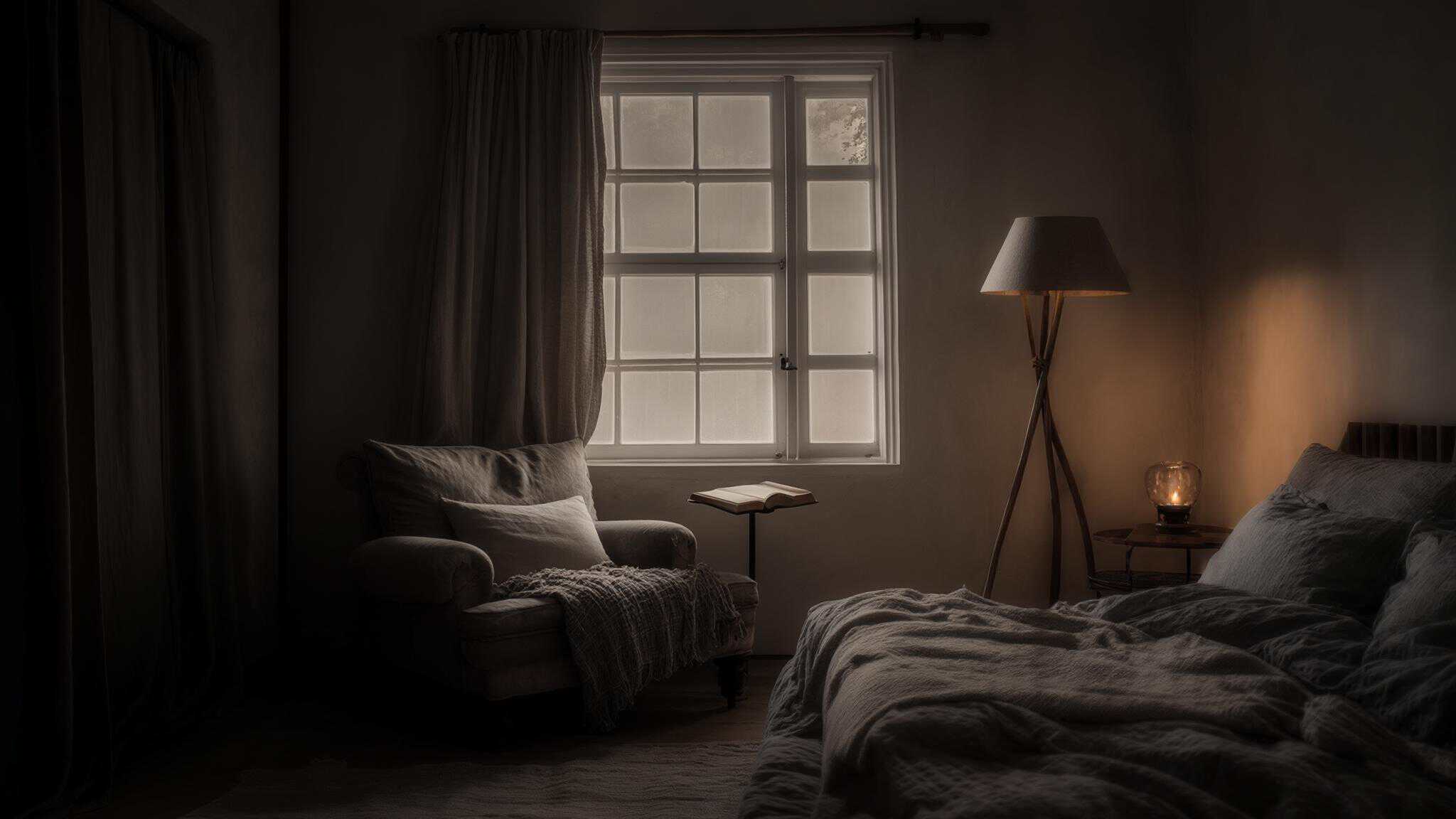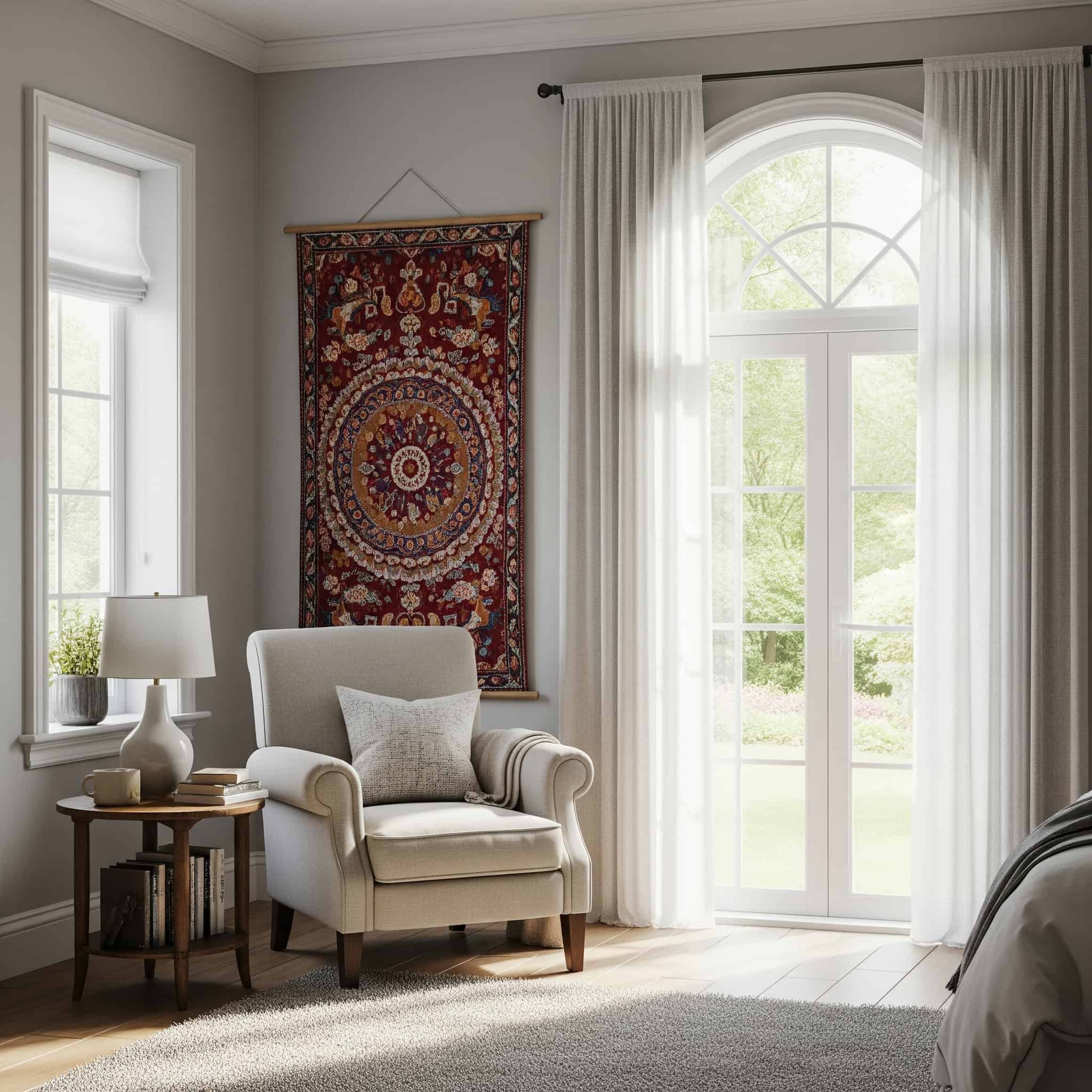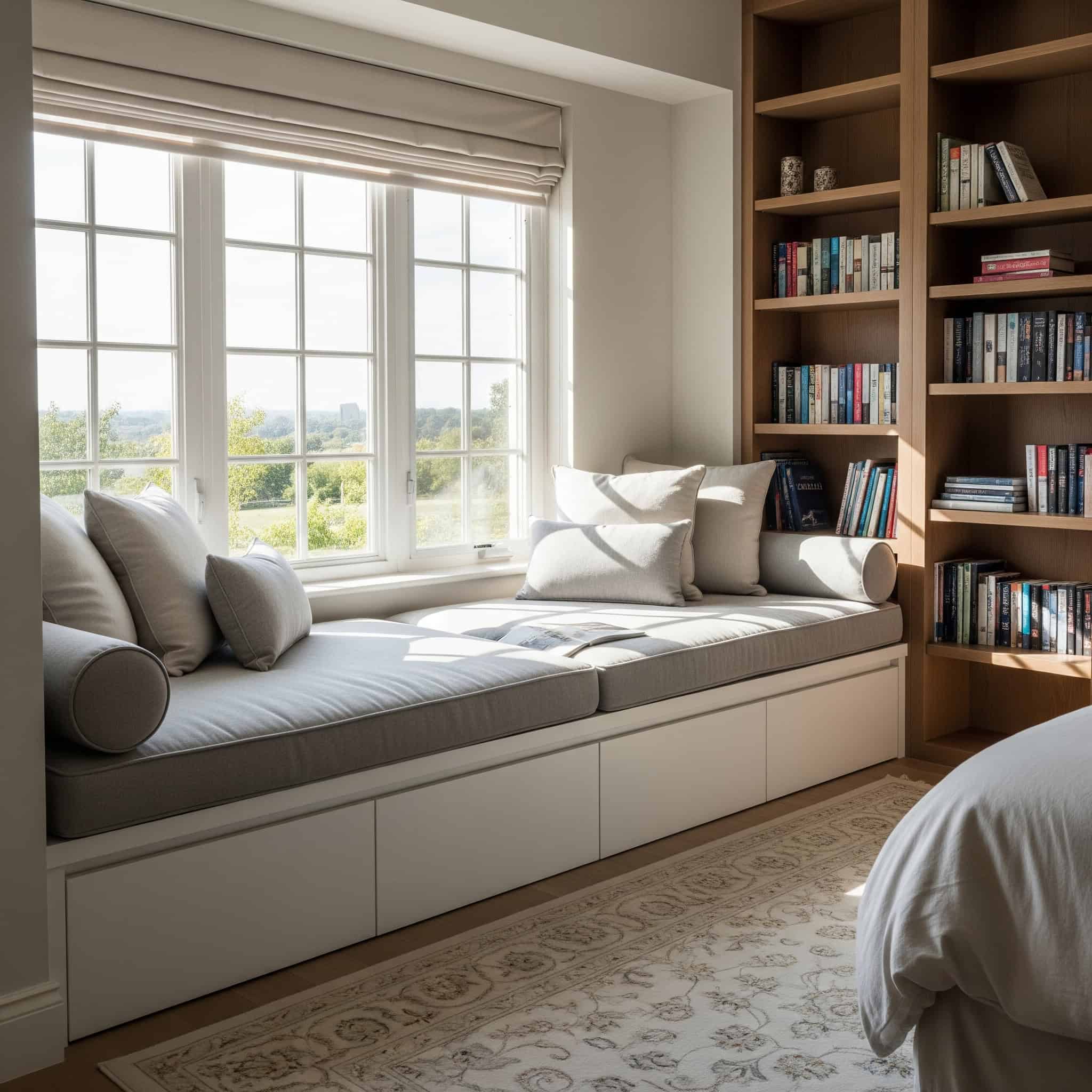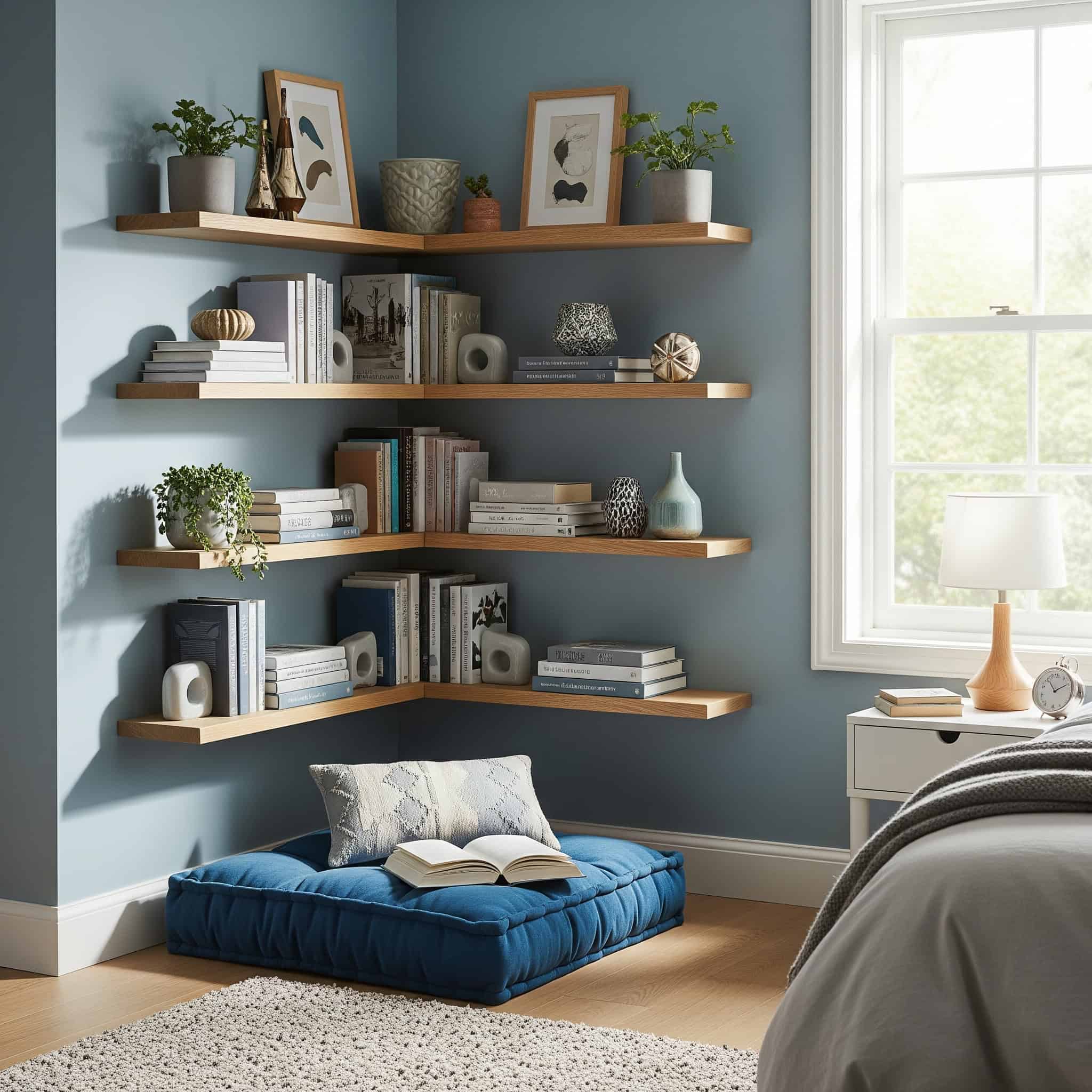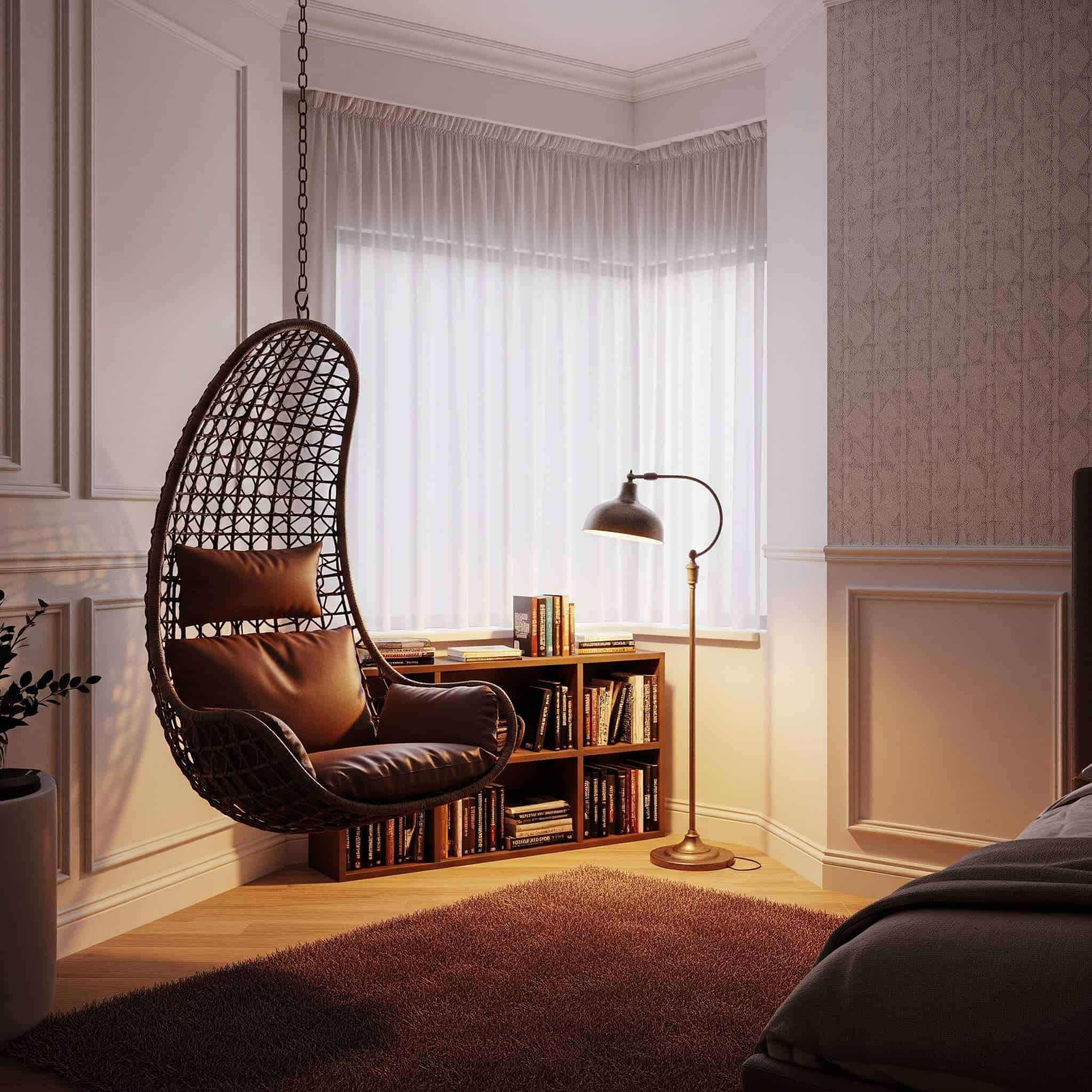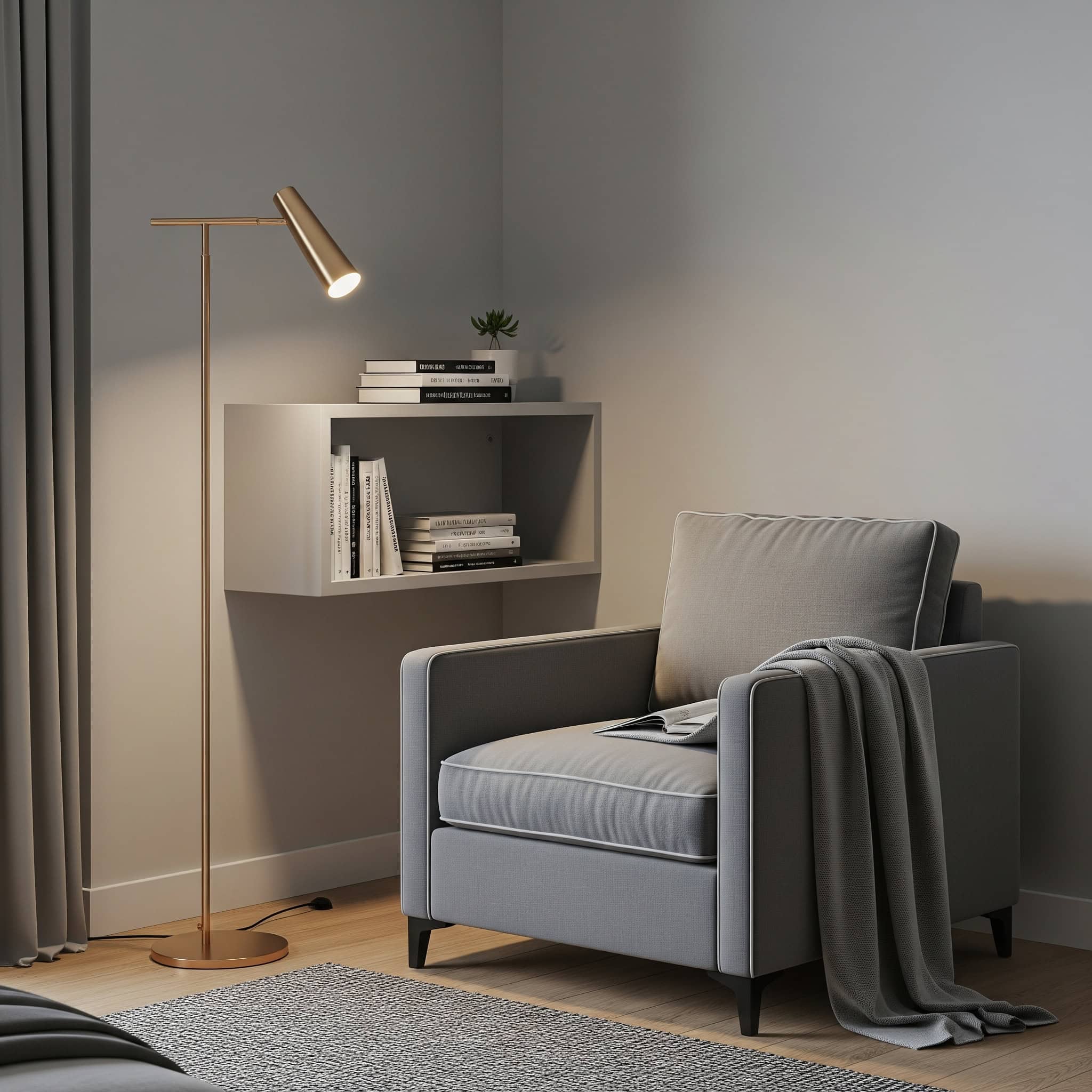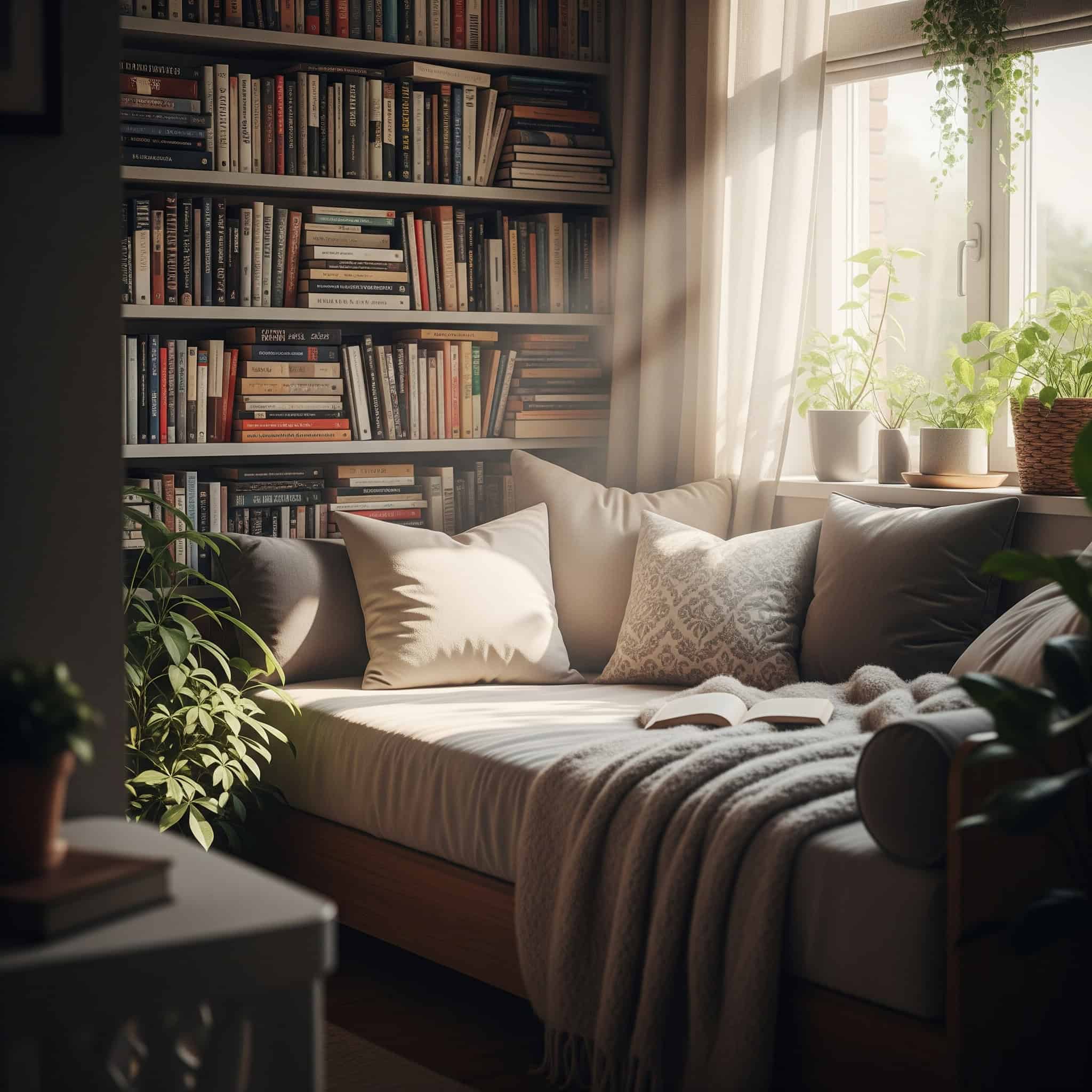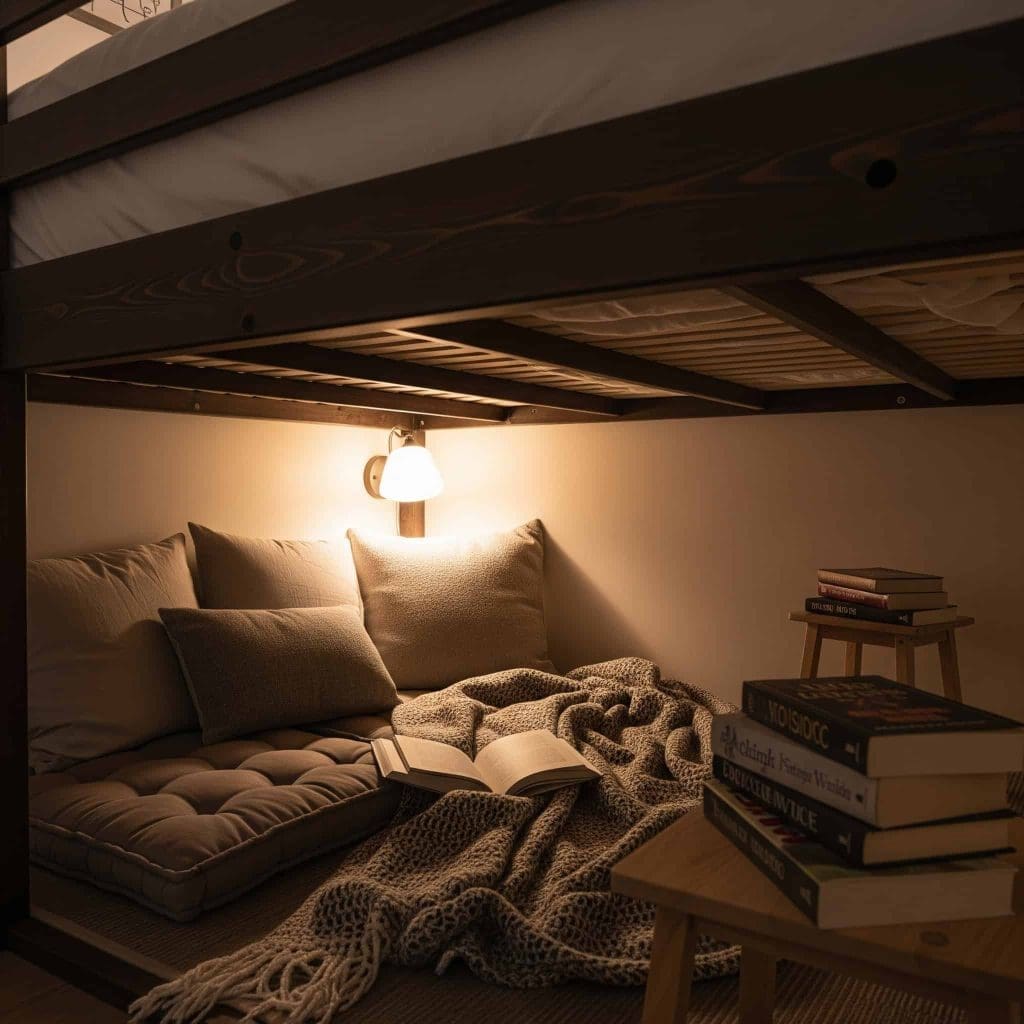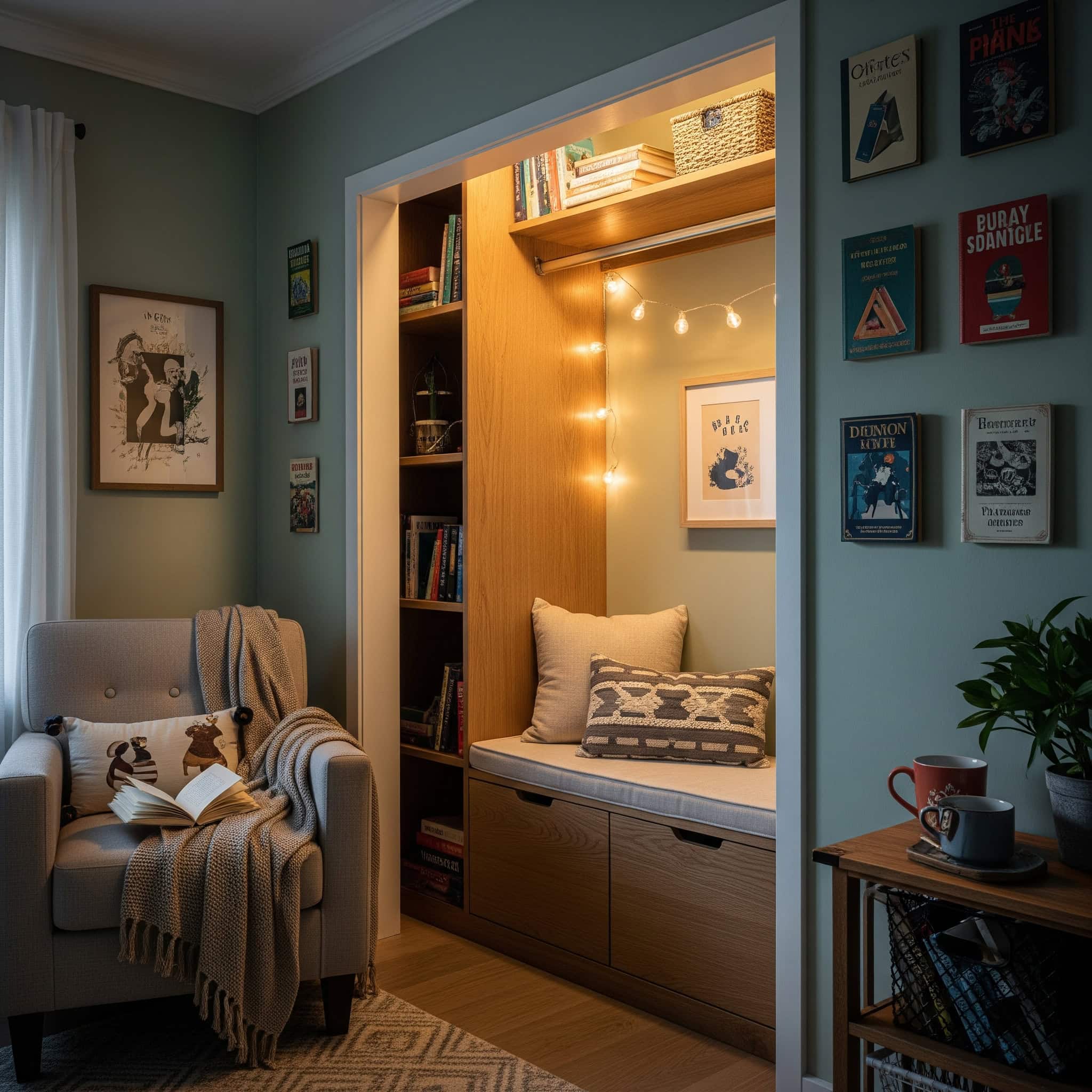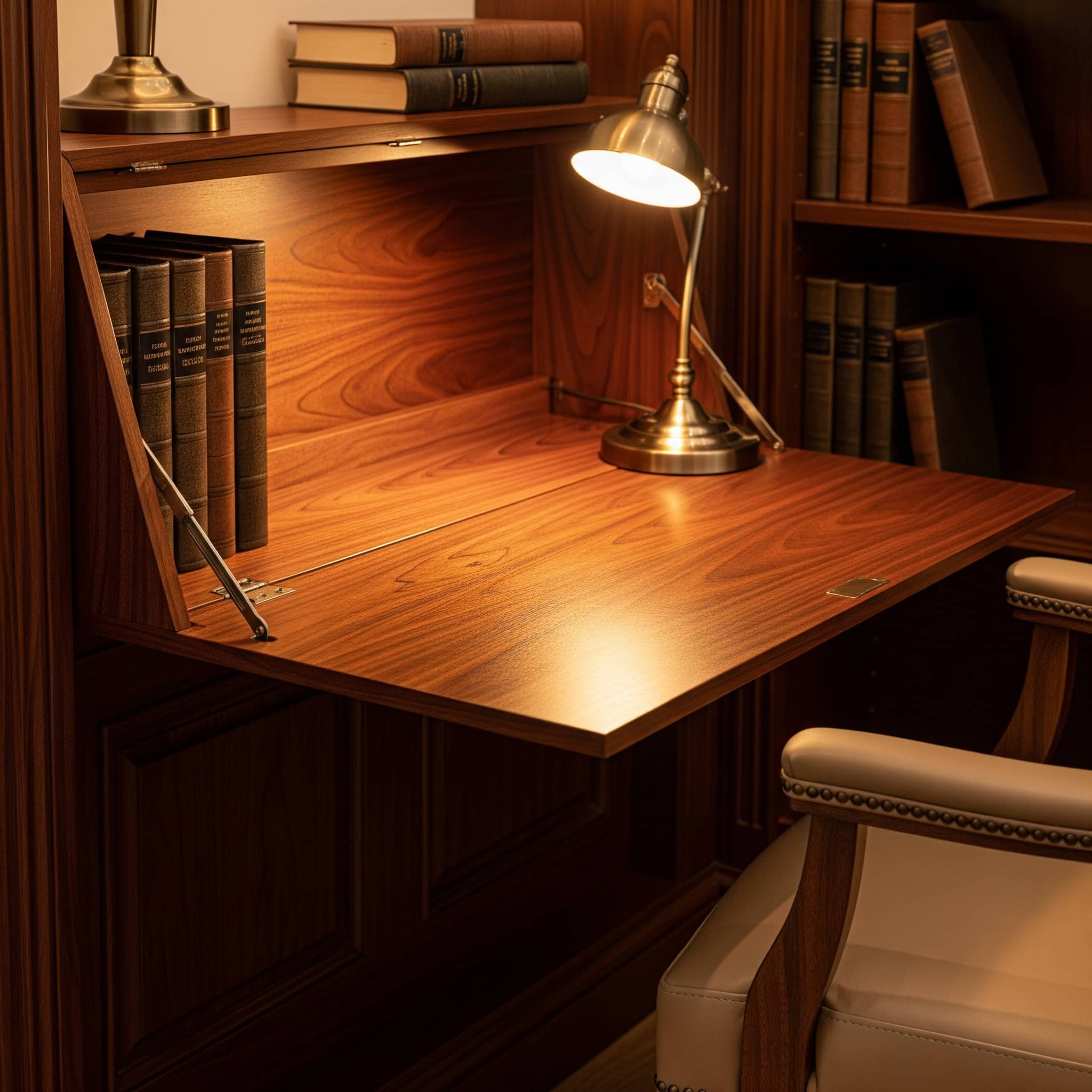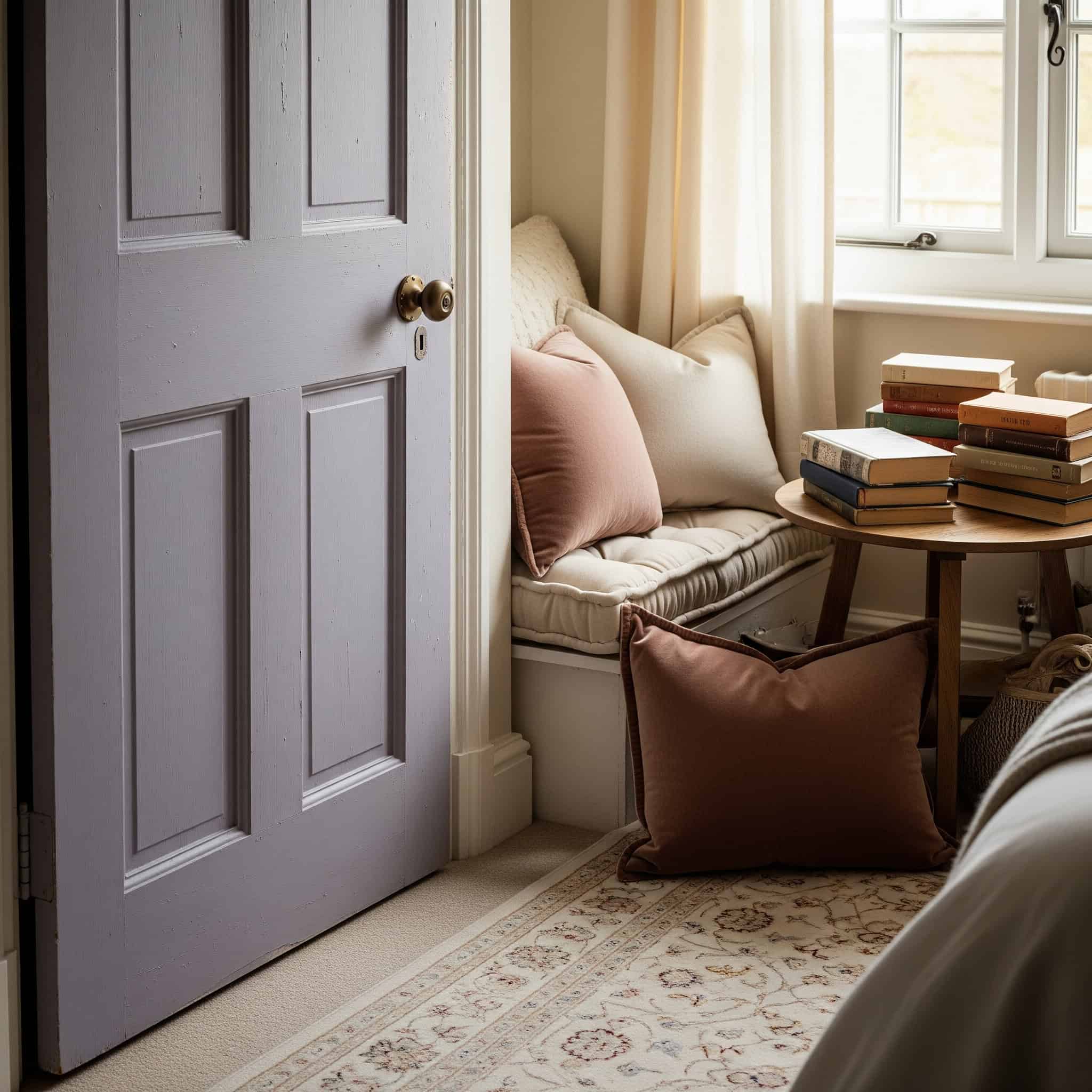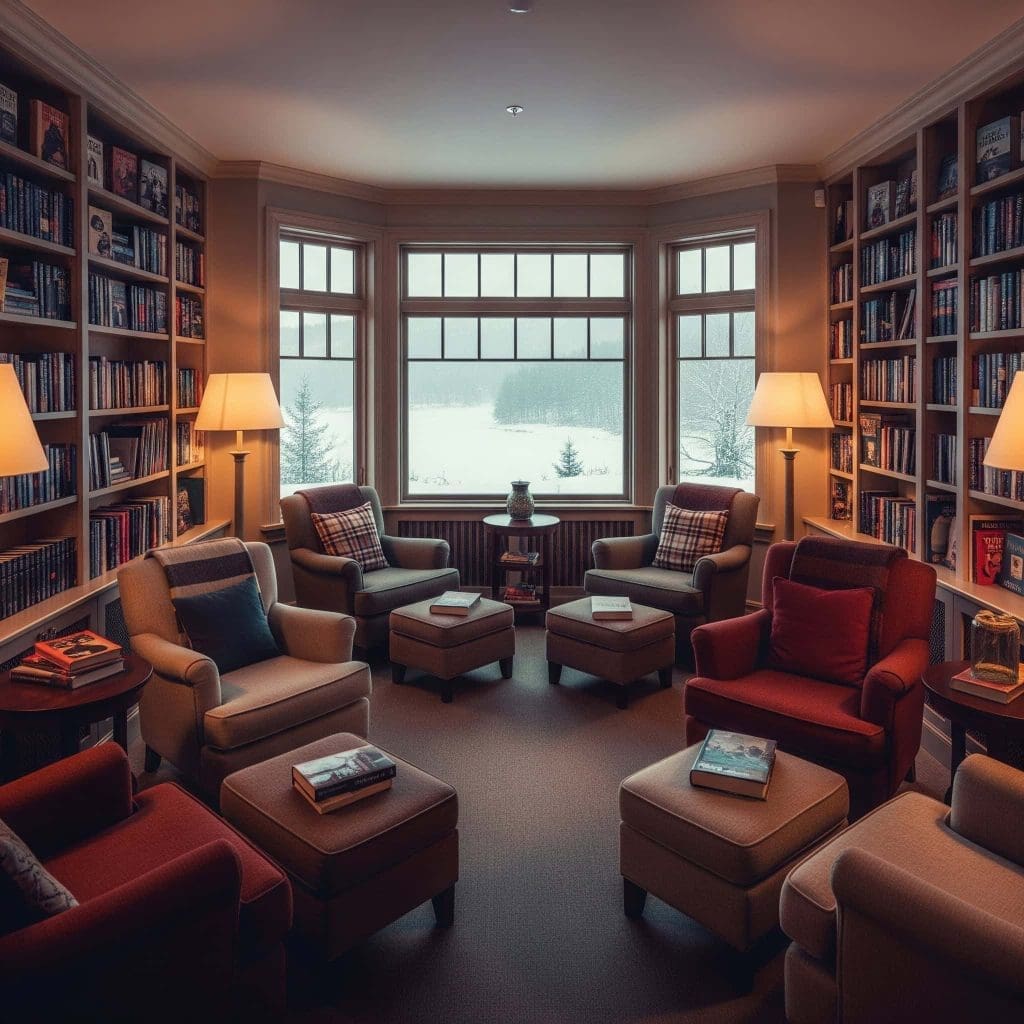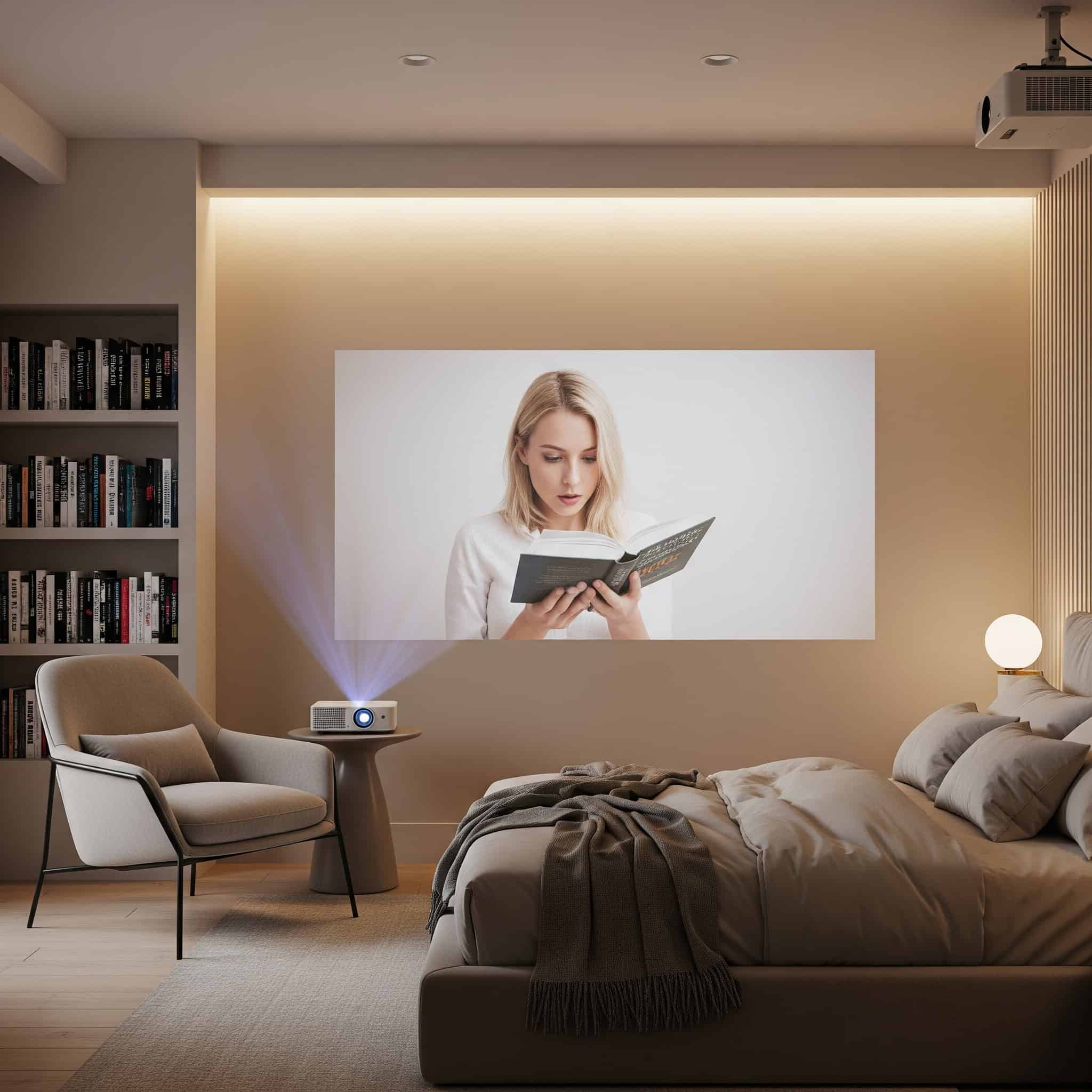25 Cozy Reading Nook Ideas That Will Transform Your Space in 2025
According to a recent survey by the National Association of Home Builders, 68% of homeowners now prioritize dedicated reading spaces in their bedroom designs. I discovered this trend while renovating my own bedroom last year. Creating a reading nook isn’t just about having a place to enjoy books—it’s about carving out a personal sanctuary that reflects your needs and style preferences. This comprehensive guide explores 25 innovative bedroom reading nook ideas for 2025, organized into five distinct categories to help you find the perfect option regardless of your space constraints, budget, or design aesthetic.
Reading nooks have evolved significantly over the years. What once was a simple chair-and-lamp setup has transformed into sophisticated micro-environments incorporating ergonomics, technology integration, and personalized comfort features.
The psychological benefits are substantial too. Having a dedicated reading space reduces stress levels and improves sleep quality when separated from work areas. I’ve noticed that friends who create these spaces are much more likely to maintain regular reading habits.
Table of Contents
-
What to Consider When Creating a Bedroom Reading Nook
-
Window-Based Reading Nooks
-
Corner Reading Nooks
-
Furniture-Integrated Reading Nooks
-
Small Space Reading Nooks
-
Luxury and Tech-Enhanced Reading Nooks
-
How Jiffy Junk Can Help Prepare Your Space
-
Final Thoughts
What to Consider When Creating a Bedroom Reading Nook
Before selecting a specific reading nook design, you need to evaluate several key factors that will influence your choices. Available space determines what’s physically possible, while comfort ensures you’ll actually use the nook regularly. Proper lighting prevents eye strain, and storage solutions keep your books accessible. Your personal style, budget constraints, intended functionality, and seasonal adaptability all play crucial roles in creating a reading space that serves you well year-round.
When designing my reading nook, I discovered that ergonomic considerations make a huge difference in comfort. Proper back support is essential, maintaining a 100-110 degree angle between torso and thighs. This seemingly small detail can be the difference between a 20-minute reading session and a two-hour deep dive into your favorite novel.
Light temperature significantly impacts reading comfort too. I installed adjustable lighting that ranges between 3000K-4000K, providing optimal illumination without causing eye fatigue. This range is particularly important for evening reading as it won’t disrupt melatonin production when you’re winding down before bed.
|
Factor |
Importance |
Considerations |
|---|---|---|
|
Space |
High |
Minimum 4×4 ft for chair setup, 6×4 ft for window seat |
|
Lighting |
Critical |
Natural + task lighting (3000K-4000K) |
|
Seating Comfort |
High |
Support for 30+ minutes of reading |
|
Storage |
Medium |
Within arm’s reach, capacity for 10-15 books |
|
Personalization |
Medium |
Reflects personal aesthetic and reading habits |
|
Seasonal Adaptability |
Low-Medium |
Adjustable for year-round comfort |
Window-Based Reading Nooks
1. Bay Window Seat
Bay windows provide natural architectural framing for reading nooks. This design features built-in bench seating with storage drawers underneath, topped with thick cushions in durable, waterproof fabric. The addition of coordinating throw pillows enhances both comfort and visual appeal. You’ll enjoy excellent natural lighting throughout the day while having a dedicated space that maximizes an often underutilized area of the bedroom.
I’ve found that custom bay window seats require substantial cushioning for comfort. You’ll want at least 3-inch high-density foam (minimum 1.8 pounds per cubic foot) for adequate support during extended reading sessions. Anything less and you’ll start feeling the hard surface beneath after about 30 minutes.
Window treatments deserve careful consideration too. I recommend UV-filtering options to protect your books from sun damage while still allowing natural light transmission. This small investment protects your book collection and prevents fading of your cushions and pillows.
2. Floating Window Bench
This space-efficient option works particularly well in smaller bedrooms where floor space is limited. The design features a wall-mounted wooden platform extending beneath a window, finished with a memory foam cushion for comfort. A minimal side table provides space for books and drinks. The floating design creates a sense of openness while still providing a dedicated reading area with excellent natural light.
When I installed my floating bench, I learned that proper wall mounting is crucial. You’ll need heavy-duty brackets capable of supporting at least 300 pounds of dynamic weight to account for movement while sitting. This isn’t a place to cut corners on hardware!
For the cushion, I recommend memory foam with a density of 3-5 pounds per cubic foot and a thickness of 2-4 inches. This prevents compression over time while providing immediate comfort. I made the mistake of using a cheaper foam initially and had to replace it after just six months of regular use.
3. Window Corner Armchair
This straightforward approach positions an oversized reading chair at a 45° angle in a window corner, paired with an adjustable floor lamp and small side table. It’s one of the easiest reading nooks to implement using existing furniture, making it budget-friendly and adaptable. The placement maximizes natural light while creating a distinct reading zone within your bedroom without requiring construction or permanent modifications.
Chair positioning relative to windows requires more thought than you might expect. I position mine at about 30-45 degrees offset from direct sunlight to prevent glare while maintaining illumination. This angle changes slightly depending on the season, so I mark optimal positions for summer and winter.
Reading chairs should provide a minimum seat depth of 22-24 inches to accommodate comfortable positions including leg tucking and side-sitting. I’ve found this depth allows for shifting positions during longer reading sessions, which helps prevent stiffness.
4. Double-Width Window Seat
This generous design creates an extra-wide window seat that accommodates two people or allows for stretching out completely. Built-in bookshelves on both sides provide ample storage while framing the seating area. The expanded dimensions transform this from a simple reading spot into a true relaxation zone that can serve multiple purposes within your bedroom.
For maximum comfort, maintain a minimum width of 36-40 inches to accommodate comfortable lounging positions. Anything narrower and you’ll feel constrained when trying to shift positions or stretch out.
If you’re building against an exterior wall, don’t forget about ventilation. I incorporated small, discrete vents into my integrated bookshelf design to prevent moisture accumulation, particularly important in humid climates. This simple addition prevents musty odors and protects both your books and the structure itself.
5. Greenhouse Window Extension
This premium option extends your window area with glass panels to create a mini-greenhouse effect. Furnished with a weatherproof chaise and complemented by potted plants, this design creates an immersive indoor-outdoor reading experience. While requiring architectural modifications, the result is a stunning reading sanctuary that provides exceptional natural light and a connection to the outdoors regardless of weather conditions.
I transformed my east-facing bedroom window into a greenhouse reading nook last year, extending the space with tempered glass panels that maintain a comfortable temperature year-round. The 6×8 foot extension includes a weatherproof rattan chaise, three potted snake plants for air purification, and a small water feature that creates gentle background sounds. The space cost approximately $3,200 to construct but has become my favorite spot in the house—I now read for an average of 90 minutes daily compared to my previous 30 minutes, making the investment worthwhile for my reading habits.
Greenhouse extensions require specialized glazing with appropriate R-values and solar heat gain coefficients based on your climate zone. I selected double-paned glass with a low-E coating that maintains comfortable temperatures even during summer afternoons. Without this specification, the space would become unbearably hot during sunny days.
Plant selection matters too. Focus on varieties that thrive in variable temperature conditions and provide air-purifying benefits without excessive maintenance requirements. Snake plants, pothos, and ZZ plants have worked wonderfully in my space, requiring minimal care while improving air quality.
Corner Reading Nooks
6. Corner Floating Shelves with Floor Cushion
This budget-friendly and space-efficient design transforms an unused bedroom corner into a casual reading retreat. L-shaped floating shelves installed above a thick floor cushion create a cozy atmosphere while providing accessible book storage. The addition of poufs and plush pillows enhances comfort for floor seating. This approach works particularly well for casual readers who enjoy sitting on the floor and appreciate flexibility in their reading positions.
Floor cushions for reading should be substantial—at least 4-5 inches thick with a supportive foam core. This provides adequate separation from hard flooring and prevents discomfort during longer reading sessions. I use a combination of memory foam and polyester fill in mine for the perfect balance of support and softness.
When installing L-shaped floating shelves, proper corner bracing techniques are essential. Books create asymmetrical weight distribution that can stress standard shelf brackets. I reinforced my corner installation with additional brackets and made sure to hit wall studs rather than relying solely on drywall anchors.
7. Corner Sectional Mini-Sofa
A small L-shaped sectional designed specifically for corner placement maximizes seating comfort while efficiently using space. Built-in USB charging ports and hidden storage compartments add functionality to this versatile option. This approach provides excellent comfort for extended reading sessions and can accommodate multiple people, making it ideal for shared bedrooms or family reading time.
When shopping for a corner sectional, look for a seat depth of 22-24 inches and back height of at least 32 inches. These dimensions support proper posture during extended reading and prevent the hunched position that leads to neck and back pain.
I integrated charging solutions into my sectional with surge protection and positioned outlets to minimize cord visibility while maintaining accessibility. This small detail makes a huge difference in usability—I can charge my e-reader or phone without unsightly cords draped across the seating area.
8. Hanging Corner Chair
This distinctive option features a suspended macramé or rattan hanging chair installed in a bedroom corner, paired with a small bookcase and floor lamp. The design saves valuable floor space while creating a unique reading experience that many find relaxing due to the gentle swinging motion. The suspended chair becomes both a functional reading spot and a striking design element within your bedroom.
Installing a ceiling-mounted hanging chair requires more structural consideration than you might think. You’ll need to secure it into structural ceiling joists or dedicated support beams capable of supporting dynamic loads of 300-450 pounds. I hired a professional to install mine after realizing the complexity involved in safely mounting a chair that would bear my full weight plus movement.
Swing radius clearance is another important consideration. Maintain minimum 24-inch clearance from all walls and furniture to prevent collision during normal movement. I rearranged my bedroom furniture twice before finding the perfect placement that allowed full swinging motion without bumping into anything.
9. Corner Built-In Bench with Canopy
This custom L-shaped bench with storage beneath creates a dedicated reading atmosphere enhanced by a fabric canopy or string lights. The design transforms an ordinary corner into an intimate reading retreat with excellent storage capabilities. The canopy element adds a sense of enclosure and privacy that many readers find conducive to deeper concentration and immersion in their books.
When designing my canopy, I made sure to use fire-retardant fabrics and maintain minimum 12-inch clearance from lighting fixtures. This prevents heat buildup and eliminates potential fire hazards from fabric coming into contact with warm bulbs.
Don’t forget about ventilation in your corner bench storage. I incorporated discrete holes and slats to prevent moisture accumulation in enclosed spaces. This simple addition prevents musty odors and protects both stored items and the structure itself from potential mold or mildew.
10. Minimalist Corner Reading Station
This approach repurposes a simple corner desk as a reading station with an ergonomic chair, adjustable reading lamp, and wall-mounted shelving. The multi-functional space works for both reading and other activities, making it ideal for bedrooms with limited square footage. While offering less lounge comfort than some alternatives, this design excels in practicality and can be implemented with existing furniture for maximum budget efficiency.
Creating a minimalist reading station is a great first step before tackling larger home organization projects. For more comprehensive space transformation ideas, check out our guide on how to get rid of clutter to create a more peaceful environment.
Reading station ergonomics deserve careful attention. Position books at approximately 14-16 inches from eyes with a 30-degree viewing angle to minimize neck strain. I use an adjustable book stand that allows me to maintain this optimal position regardless of book size or weight.
Task lighting for reading stations should provide 50-75 foot-candles of illumination concentrated on the reading surface without creating screen glare. I installed an adjustable LED lamp with multiple brightness settings that allows me to customize the lighting based on time of day and the type of material I’m reading.
Furniture-Integrated Reading Nooks
11. Bookshelf Headboard with Extended Platform
This innovative design features a bed with a bookshelf headboard that extends on one side to create a reading bench, complete with integrated lighting. The approach maximizes bedroom space by combining functions, eliminating the need for separate reading furniture. The direct connection to your bed makes this option particularly convenient for bedtime reading while still providing a distinct space dedicated to the activity.
Extended platform designs should maintain consistent height with the mattress surface (typically 22-25 inches) to create visual continuity. This height consistency makes the extension feel like a natural part of the bed rather than an awkward addition.
I incorporated directional control features into my headboard lighting to prevent light spill that might disturb sleeping partners. Small reading spotlights with adjustable heads allow me to focus illumination precisely on my book without creating ambient light that would keep my partner awake.
12. Reading Nook Daybed
This multi-functional piece serves as both a guest bed and reading nook, featuring a daybed with bolster pillows and a canopy, positioned perpendicular to a wall of bookshelves. The versatile design provides excellent comfort for extended reading sessions while offering practical utility for overnight guests. The perpendicular positioning creates a natural division between sleeping and reading zones within the same piece of furniture.
Daybed frames for reading nooks need reinforced corners and center supports to accommodate varied sitting positions without structural stress. I learned this the hard way when my first daybed began to creak after just a few months of use. The replacement I chose has additional support beams that distribute weight more effectively.
Bolster pillow arrangements should include varied densities to accommodate different reading positions. I use firm pillows for back support and medium-density ones for arm rests. This combination allows me to shift positions comfortably during longer reading sessions without developing pressure points or discomfort.
13. Armoire Converted Reading Hideaway
This creative upcycling project transforms a vintage armoire by removing its doors and retrofitting the interior with seating, lighting, and shelving to create a mini-library. The enclosed design creates a dedicated reading space that can be “closed” when not in use, making it ideal for shared bedrooms or spaces where visual simplicity is desired. The repurposed furniture approach can be budget-friendly while creating a truly unique reading experience.
Converted armoire interiors require reinforcement at stress points to accommodate the weight shift from hanging clothes to seated readers. I added additional bracing to the bottom and sides of mine to ensure stability and safety.
For interior lighting, I installed LED strips with color temperature controls to provide adequate illumination within the confined space without generating excess heat. This type of lighting is particularly important in enclosed spaces where heat buildup could potentially damage books or create uncomfortable reading conditions.
|
Reading Nook Type |
Space Required |
Budget Range |
DIY Difficulty |
|---|---|---|---|
|
Window Seat |
15-25 sq ft |
$500-$2,500 |
Medium-High |
|
Corner Chair Setup |
9-12 sq ft |
$200-$800 |
Low |
|
Hanging Chair |
12-16 sq ft |
$300-$900 |
Medium |
|
Closet Conversion |
6-12 sq ft |
$400-$1,200 |
Medium |
|
Armoire Conversion |
6-8 sq ft |
$250-$700 |
Medium |
|
Under-Loft Setup |
15-20 sq ft |
$300-$1,000 |
Low-Medium |
|
Tech-Enhanced Pod |
20-30 sq ft |
$1,500-$5,000 |
High |
14. Under-Loft Bed Reading Retreat
This space-saving solution utilizes the area beneath a loft bed, furnishing it with floor cushions, wall-mounted bookshelves, and string lights. The design creates a naturally enclosed reading nook that feels separate from the rest of the bedroom. This approach works particularly well for children and young adults, effectively doubling the functional space in smaller bedrooms while creating a cozy, cave-like reading environment.
When setting up an under-loft reading retreat, you’ll likely need to clear out accumulated items first. For tips on efficiently handling the cleanout process, see our guide on getting your deposit back with end-of-tenancy cleaning which includes strategies for thorough space preparation.
Under-loft reading areas should maintain minimum 38-inch clearance height for comfortable seated posture without hunching. I measured carefully before installing my loft bed to ensure adequate headroom for comfortable reading without feeling cramped.
Lighting solutions should incorporate multiple sources to prevent shadowing from the overhead bed structure. I use a combination of string lights for ambient illumination, a clip-on task light for focused reading, and small LED puck lights to eliminate dark corners. This layered approach creates a well-lit space despite the overhead obstruction.
15. Convertible Ottoman Reading Spot
This highly versatile piece features an oversized storage ottoman that unfolds into a chaise lounge, positioned near a bookshelf or rolling book cart. The design saves valuable space when not in use while providing comfortable extended seating when needed. The built-in storage capacity offers convenient space for reading accessories, blankets, or other items you want to keep close at hand during reading sessions.
After measuring my 12×14 foot bedroom, I discovered I had limited floor space but needed both additional seating and storage. I invested in a convertible ottoman that unfolds into a 65-inch chaise lounge ($450 from a furniture outlet). The ottoman measures just 30×30 inches when closed, storing my collection of throw blankets, bookmarks, and reading journals inside. When unfolded, it creates a comfortable reading surface that supports my entire body, and the microfiber upholstery has proven remarkably stain-resistant despite regular use with coffee and tea. The piece has completely eliminated my need for a separate reading chair, saving approximately 12 square feet of floor space.
Convertible ottoman mechanisms should utilize heavy-duty hinges rated for at least 10,000 open/close cycles to ensure longevity. I checked this specification carefully when shopping, as cheaper models often use lightweight hinges that fail quickly with regular use.
Unfolded dimensions should provide minimum 60-inch length to accommodate full-body reclining positions for average adults. This length allows for comfortable stretching out without feet dangling off the end, which can become uncomfortable during longer reading sessions.
Small Space Reading Nooks
16. Closet Conversion Reading Nook
This clever solution transforms an unused closet by removing doors and adding a bench seat with storage drawers, wall-mounted shelving, and LED lighting. The approach creates a dedicated reading area physically separate from the rest of the bedroom, providing enhanced privacy and focus. The enclosed nature of a former closet naturally creates a cozy atmosphere that many readers find conducive to deeper immersion in their books.
Before converting a closet into a reading nook, you may need to declutter and remove old items. For professional assistance with this process, explore our storage unit cleanout services which can help you efficiently prepare the space for transformation.
Closet conversions should address ventilation concerns through the addition of small fans or strategic air circulation pathways. I installed a small USB-powered fan near the ceiling of my converted closet reading nook to prevent stuffiness during longer reading sessions.
Electrical modifications for lighting should comply with local building codes. I hired an electrician to install proper junction boxes and wire protection in my converted space, ensuring both safety and code compliance. This professional installation cost more initially but provides peace of mind regarding fire safety.
17. Rolling Library Ladder with Platform
This unique space-saving solution features a compact reading platform at the top of a rolling library ladder, allowing access to high bookshelves while providing a small seating area. The vertical design makes efficient use of wall space and adds architectural interest to your bedroom. While offering limited comfort for extended reading, this option creates a distinctive feature that serves both practical storage and specialized reading functions.
Rolling ladder systems require tracks rated for both horizontal movement and static weight-bearing capacity. I selected a system rated for at least 300 pounds to ensure safety when sitting on the platform. The track installation was the most technical part of this project, requiring precise alignment and secure attachment to wall studs.
Platform dimensions should include minimum 24×24-inch seating area with 36-inch safety railings on exposed sides. I made mine slightly larger at 30×30 inches to accommodate more comfortable seating positions, and I’m glad I did—the extra space makes a significant difference in usability.
18. Fold-Down Reading Desk
This extremely space-efficient option features a wall-mounted desk that folds down to reveal a small reading station with built-in lighting and storage, then closes to save space when not in use. The design works particularly well in very small bedrooms or multi-purpose spaces where permanent reading furniture isn’t practical. While less comfortable than dedicated seating options, the fold-down approach ensures your reading space never interferes with other bedroom functions.
Fold-down mechanisms should incorporate soft-close hydraulics to prevent slamming and counterbalance weights to ease operation. I added these features to mine after initially installing a basic hinge system, and the upgrade made a tremendous difference in both safety and usability.
Weight distribution when extended should maintain a 2:1 ratio between wall-mounted section and fold-down portion to prevent tipping risk. I reinforced my wall mounting with additional brackets to ensure stability, distributing the load across multiple wall studs rather than concentrating it in one area.
19. Alcove Mini-Library
This design makes use of architectural features by transforming a small wall alcove into a reading nook lined with bookshelves and fitted with a narrow bench and sconce lighting. The approach takes advantage of existing structural elements that might otherwise go unused. While offering limited seating space, the alcove design creates a naturally framed reading area with excellent book storage that feels intentionally designed rather than added-on.
Alcove bench seating should be sized to allow 2-3 inches of clearance on each side to facilitate air circulation and prevent moisture buildup. This small gap makes a significant difference in preventing the musty odors that can develop in tight spaces, especially in humid climates.
For lighting, I positioned sconces 16-20 inches above seated eye level to prevent direct glare while providing adequate illumination. This height creates pleasant ambient lighting while still delivering enough focused light for comfortable reading without eye strain.
20. Bedroom Door Reading Nook
This innovative approach utilizes the often-overlooked space behind the bedroom door with a slim chair, wall-mounted book rail, and clip-on reading light. The design requires minimal modification to your bedroom while making use of space that typically goes unused. This very budget-friendly option works well in extremely space-constrained situations or rental properties where permanent installations aren’t possible.
Door clearance calculations should account for maximum door opening angle (typically 110-120 degrees) minus the depth of the chair to ensure functionality. I measured carefully before selecting my chair, ensuring that the door could still open fully without hitting the furniture.
Wall-mounted book rails should be installed with anchors capable of supporting 10-15 pounds per linear foot. I learned this specification after my first attempt failed when the rail pulled away from the wall under the weight of hardcover books. The replacement installation uses toggle bolts that distribute the weight more effectively.
|
Lighting Type |
Best For |
Pros |
Cons |
Recommended Placement |
|---|---|---|---|---|
|
Natural Window Light |
Daytime reading |
No energy cost, optimal color rendering |
Varies by time/weather, potential glare |
Position seating at 45° angle to window |
|
Adjustable Floor Lamp |
Versatile positioning |
Directional control, portable |
Requires floor space, cord management |
2-3 ft behind reader’s dominant shoulder |
|
Wall Sconces |
Space-saving ambient light |
Frees up surface space, even distribution |
Fixed position, installation required |
16-20″ above seated eye level |
|
LED Strip Lighting |
Accent/mood lighting |
Low profile, customizable color |
Not sufficient as primary light source |
Behind shelving, under seating edges |
|
Task Clip Light |
Focused reading |
Portable, adjustable, inexpensive |
Limited coverage area, often battery-dependent |
Attached to book or nearby furniture |
Luxury and Tech-Enhanced Reading Nooks
21. Smart Reading Cocoon
This high-end option features a pod-style reading chair with integrated speakers, adjustable lighting, climate control, and tablet holder. The design creates an immersive reading experience by controlling all environmental factors that influence reading comfort. While representing a significant investment, this technology-integrated approach provides unparalleled customization of your reading environment regardless of surrounding conditions.
Smart cocoon systems typically incorporate IoT connectivity allowing synchronization with home automation systems and reading apps. I programmed mine to automatically adjust lighting based on time of day and the type of reading material I’m enjoying. The system even tracks my reading sessions and suggests optimal environmental settings based on when I’ve spent the most time reading.
Acoustic engineering in premium reading pods utilizes sound-absorbing materials with Noise Reduction Coefficients (NRC) of 0.7 or higher. These materials create optimal listening environments by minimizing echo and external noise interference. The difference is remarkable—I can read in complete concentration even when the rest of the house is active and noisy.
22. Heated Window Reading Lounge
This luxury option places a window-adjacent chaise with built-in heating elements in both the seat and surrounding floor area, paired with automated lighting and temperature-regulating curtains. The design ensures year-round comfort regardless of external temperatures, making it ideal for cold climates. The integration of automated environmental controls creates a consistently comfortable reading experience with minimal manual adjustment needed.
Heated seating elements should utilize low-voltage systems (typically 12-24V) with automatic shutoff features and temperature limiting controls for safety. I installed a system that automatically turns off after two hours to prevent overheating if I fall asleep while reading.
Automated window treatments incorporate both UV filtering and R-value enhancement to maintain consistent interior temperatures near windows. My motorized curtains are programmed to adjust based on both time of day and external temperature readings, maximizing natural light while minimizing heat loss or gain depending on the season.
23. Floating Suspended Reading Pod
This statement piece features a circular suspended reading pod with 360° rotating capability, custom cushioning, and integrated ambient lighting. The design creates a unique reading experience physically separated from the rest of the room, enhancing immersion and focus. The suspended nature of the pod creates a gentle motion many readers find relaxing, while the rotating capability allows optimal positioning relative to natural light throughout the day.
Suspended pod installations require serious ceiling reinforcement capable of supporting dynamic loads of 400-600 pounds with appropriate safety factors. I consulted with a structural engineer before installing mine to ensure the ceiling could safely support both the pod and its occupants during movement.
Rotation mechanisms should incorporate balanced weight distribution and smooth-action bearings rated for at least 20,000 cycles. I selected a system with sealed bearings that require minimal maintenance while providing smooth, quiet rotation that won’t distract from reading.
24. Projection Reading Room
This tech-forward solution creates a corner area with comfortable seating and blank wall space for a mini projector that can display digital books in large format. The design is particularly beneficial for readers with vision challenges or those who enjoy sharing reading experiences with others. The projection approach allows for customization of text size, contrast, and format that physical books cannot provide.
My 72-year-old father struggled with reading due to macular degeneration until we created a projection reading setup in his bedroom corner. We installed a BenQ HT2050A projector ($750) mounted on a ceiling bracket, projecting onto a specially painted 6×4 foot section of wall with Screen Goo projection paint ($200). The system connects to his e-reader via HDMI, displaying text at 300% of normal size. We positioned his favorite leather recliner at the optimal 8-foot viewing distance and added a small side table for his reading accessories. This setup has increased his reading time from virtually zero to 1-2 hours daily, completely transforming his relationship with books despite his vision limitations.
Projection systems for reading should deliver minimum 2000 lumens brightness with contrast ratios exceeding 2000:1 for text clarity. These specifications ensure text remains crisp and readable even in rooms that aren’t completely dark.
Wall surfaces should utilize neutral matte finishes with gain factors between 1.0-1.3 to optimize text readability without hotspotting. I tested several surface treatments before finding the perfect combination that provides even illumination across the entire projection area.
25. Aromatherapy Reading Haven
This multi-sensory reading experience features a plush reading chair with surrounding built-ins that include integrated essential oil diffusers, sound machines, and circadian rhythm lighting. The design creates a holistic approach to reading comfort that addresses all senses, not just visual needs. The incorporation of aromatherapy and sound elements can enhance focus, relaxation, or energy depending on your preferences and the type of reading you’re doing.
Circadian lighting systems offer color temperature ranges from 2700K (warm/relaxing) to 5000K (energizing/focus) with programmable transitions. I programmed mine to shift gradually toward warmer tones in the evening, helping maintain my natural sleep cycle even during late-night reading sessions.
Aromatherapy integration should incorporate HEPA filtration to prevent oil residue accumulation on books and reading materials. I learned this lesson after finding a fine film on some of my book covers—the addition of a small filtration system solved the problem while still allowing the aromatherapy benefits.
How Jiffy Junk Can Help Prepare Your Space
Creating your dream reading nook often requires clearing the designated area first. You’ll need to remove unused items, sort through books, eliminate bulky furniture, and possibly dispose of construction debris. Jiffy Junk specializes in residential junk removal with their White Glove Treatment, handling all the heavy lifting and cleanup so you can focus on designing your reading sanctuary. Their commitment to donating or recycling items whenever possible ensures your unwanted belongings find new homes rather than ending up in landfills.
Before installing your perfect reading nook, you might need to address existing clutter or old furniture. Our team can help with furniture removal vs. donation decisions, ensuring your unwanted items are handled responsibly while making space for your new reading area.
Professional junk removal services utilize specialized equipment for removing large furniture pieces without damaging walls or flooring during the preparation phase. When I created my reading nook, the removal team used furniture sliders, shoulder straps, and protective coverings to safely extract a bulky entertainment center that had occupied the space for years.
Responsible disposal practices include sorting materials into appropriate waste streams to minimize environmental impact. Jiffy Junk separates recyclables, donations, and hazardous materials rather than sending everything to landfills. This approach aligns with my personal values regarding sustainability and responsible consumption.
Final Thoughts
Creating a bedroom reading nook is a deeply personal project that enhances both your living space and your reading experience. Whether you opt for a simple corner chair or an elaborate tech-enhanced pod, the key is designing a space that reflects your specific reading habits and preferences. By considering factors like available space, comfort needs, lighting requirements, and budget constraints, you can create a reading sanctuary that invites you to disconnect from digital distractions and reconnect with the simple pleasure of getting lost in a good book.
As you enjoy your new reading sanctuary, you might find yourself inspired to tackle other home improvement projects. For more ideas on transforming your living spaces, check out our guide on reclaiming your basement to create additional functional areas in your home.
Reading nook implementation typically follows a hierarchy of needs: structural modifications first, followed by core furniture placement, lighting installation, and finally accessory integration. I followed this sequence when creating my own nook, and it helped ensure that the fundamental elements were solid before adding decorative touches.
Maintenance schedules for reading nooks should include quarterly deep cleaning of textiles, annual inspection of any mechanical elements, and periodic reassessment of lighting effectiveness as seasons change. I’ve created a simple calendar reminder system that helps me keep my reading space in optimal condition year-round.
How to Personalize Your Reading Nook
Incorporating Personal Elements
Transforming a basic reading area into a space that feels uniquely yours requires thoughtful personalization. Start by selecting decor items that hold special meaning—perhaps souvenirs from travels or family heirlooms that spark joy when you see them. Consider creating a signature scent profile with candles or diffusers that becomes mentally associated with reading time. Rotating seasonal elements keeps the space feeling fresh throughout the year, while establishing specific reading rituals helps train your brain to shift into relaxation mode when you enter your nook.
Personalization elements should occupy no more than 20-30% of available surface area to prevent visual clutter. I learned this principle after initially overcrowding my reading nook with meaningful objects—the space felt chaotic rather than calming until I edited my collection down to just a few special items.
For scent selection, I prioritize notes proven to enhance concentration when I’m reading non-fiction (rosemary and peppermint are my favorites) and switch to relaxation scents like lavender and vanilla for fiction reading. This simple change helps signal to my brain what mode to enter and has noticeably improved both my focus and enjoyment.
Practical Maintenance Strategies
Keeping your reading sanctuary inviting requires regular upkeep. Implement quarterly deep cleaning sessions to address dust accumulation on books and textiles. Check lighting fixtures periodically to ensure bulbs provide adequate illumination without causing eye strain. Prevent uneven wear by rotating cushions and pillows, especially in frequently used spots. As your book collection evolves, reassess your storage solutions annually to accommodate changes in volume and organization needs.
Textile maintenance should include vacuuming with HEPA-filtered equipment to remove dust mites and allergens. I noticed a significant improvement in my allergies after implementing this practice, particularly during spring and fall when my symptoms typically worsen.
Book preservation in reading areas requires monitoring relative humidity levels to prevent paper degradation and binding damage. I added a small hygrometer to my reading nook and aim to maintain 30-50% humidity. In winter when indoor air becomes dry, I use a small humidifier to prevent my books from becoming brittle.
Budget-Conscious Implementation
Phased Approach to Creation
Building your dream reading retreat doesn’t require a massive upfront investment. Begin with essential components like comfortable seating and proper lighting, which directly impact your reading experience. Add storage solutions and decorative elements gradually as budget permits. This staged implementation allows you to spread costs while still enjoying a functional space from day one. Focus initial spending on items you physically interact with most frequently, as these have the greatest impact on comfort and usability.
When creating your reading nook on a budget, smart furniture choices are essential. For ideas on affordable yet stylish options, check out our guide on used furniture pickup and disposal which includes tips for finding quality secondhand pieces that can be repurposed for your reading area.
I use a priority matrix for phased implementation that ranks elements by frequency of interaction. Seating and lighting typically score 8-10 on my 10-point scale, making them my first investments. Lower-priority items like decorative elements score 3-5 and come later in the process.
Cost-per-use calculations help identify investment pieces worth splurging on. My reading chair cost $600, which seemed expensive initially. However, I use it daily for at least an hour, meaning over a five-year period, it costs just pennies per use—far less than many “budget” items that need frequent replacement.
Creative Sourcing Solutions
Resourcefulness dramatically reduces the cost of creating a reading nook. Explore secondhand marketplaces for unique furniture pieces with character that outshines mass-produced alternatives. For rental properties, embrace removable solutions like temporary wallpaper, peel-and-stick lighting, and freestanding furniture that travels with you. When budgeting, allocate funds strategically to items that directly impact physical comfort while finding creative alternatives for purely decorative elements.
Secondhand furniture should be evaluated for structural integrity before repurposing. I check stress points like arm joints and leg attachments carefully, as these are common failure points that can be expensive to repair later.
For my rental apartment, I’ve become an expert in temporary installation methods. I use damage-free hanging systems rated for appropriate weight capacities to prevent accidents and property damage. Command hooks rated for 5-8 pounds work perfectly for my wall-mounted reading light, while furniture anchors with removable adhesive keep my bookshelf stable without damaging walls.
Overcoming Common Reading Nook Challenges
Environmental Control Solutions
Reading comfort often faces environmental obstacles throughout the year. Address temperature fluctuations by incorporating a compact space heater for winter months and a USB-powered fan for summer. When wall space is limited, utilize tension rods to create floating curtains that define your nook without permanent installation. For shared bedrooms, install headphone hooks and dimmable lighting to enjoy late-night reading without disturbing partners. Those with dust allergies should select washable fabrics and consider adding air-purifying plants like snake plants or peace lilies.
Space heaters for reading nooks should feature tip-over protection, overheat sensors, and programmable thermostats to maintain consistent comfort temperatures. I selected a ceramic model with these safety features after researching fire hazard statistics related to portable heaters.
Air-purifying plants most effective for reading areas include those with high transpiration rates that increase humidity while removing airborne particulates. My snake plant and peace lily not only look beautiful but have noticeably improved air quality in my reading corner, especially during winter when windows remain closed.
Accessibility Considerations
Creating truly inclusive reading spaces requires thoughtful accessibility planning. Ensure adequate clearance for mobility devices if needed. Position essential items within easy reach to minimize stretching or bending. Install adjustable lighting with multiple brightness levels to accommodate varying visual needs. For those with joint pain or mobility issues, prioritize seating with proper support and easy entry/exit features. These considerations make your reading nook comfortable for everyone, regardless of physical limitations.
Accessible reading spaces should maintain minimum 36-inch clearance paths with turning radiuses of 60 inches where possible to accommodate mobility devices. When designing my mother’s reading nook, I carefully measured these clearances to ensure her walker could navigate the space easily.
Ergonomic entry/exit features include seat heights between 17-19 inches and armrests positioned 7-9 inches above the seat surface to facilitate movement. These dimensions make a tremendous difference for readers with mobility challenges, providing independence and comfort without calling attention to accessibility needs.
Reading Nook Technology Integration
Smart Home Compatibility
Modern reading nooks benefit tremendously from thoughtful tech integration. Voice-controlled lighting systems allow hands-free adjustment while immersed in your book. Smart plugs with scheduling capabilities can power on heating elements or diffusers before your regular reading time. Bluetooth speakers discreetly mounted behind cushions deliver ambient sound without visible equipment. These technological enhancements operate in the background, supporting your reading experience without becoming the focus.
Voice control systems should be configured with reading-specific command groups that adjust multiple elements with single commands. I created a “reading time” routine that simultaneously dims overhead lights, activates my reading lamp at 50% brightness, turns on my essential oil diffuser, and plays my reading playlist at low volume—all with a single voice command.
Wireless charging integration should utilize Qi-standard pads with minimum 10W output positioned within natural placement zones for devices. I embedded a charging pad in my side table surface, allowing me to keep my phone charged without unsightly cables while maintaining easy access for occasional checks.
Digital Reading Enhancements
Digital and physical reading can coexist harmoniously in well-designed nooks. Tablet holders positioned at ergonomic viewing angles prevent neck strain during e-reading. USB charging stations integrated into furniture eliminate battery anxiety without cable clutter. Book tracking apps displayed on small mounted screens help maintain reading goals and track progress. These digital elements complement rather than replace the traditional reading experience, offering the best of both worlds.
E-reader stands should position screens at 35-45 degree angles from horizontal to minimize glare while maintaining optimal neck positioning. I tested several angles before finding the perfect position that allows comfortable reading without the neck strain I previously experienced when looking down at my tablet.
Cable management systems should incorporate magnetic retention elements and heat-resistant channels to prevent damage from nearby reading lamps. My custom solution uses silicone cable channels with magnetic closures that keep cords neatly contained while allowing easy access when needed. This small detail makes a huge difference in the visual cleanliness of my reading space.
